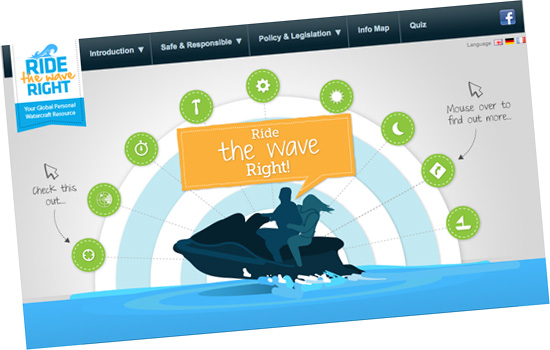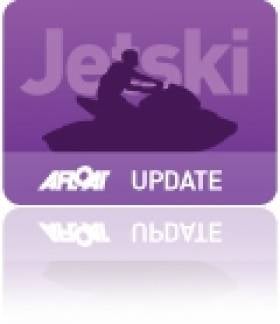Displaying items by tag: International Council of Marine Industry Associations
Ideas for Jetski Use Launched on New 'Ride the Wave Right' Website
#JETSKI – The International Council of Marine Industry Associations (ICOMIA) has launched its new global personal watercraft resource website which is intended for PWC riders.
Working in collaboration with personal watercraft manufacturers Kawasaki, Yamaha and BRP, ICOMIA's 'Ride the Wave Right' website, which is available in English, French and German, provides advice for safe and responsible PWC riding, information on the history and evolution of PWC, as well as ideas for recreational PWC activities and tips on how to be environmentally friendly on the water. The website ensures that PWC enthusiasts and government authorities have access to policy and legislation information on CE Products, (the markings and documentation which EU directives require products to carry before being placed on the market), the CIN Checker Database (on-line Craft Identification Number (CIN) checking system) and Grey Imports (PWCs that are not purchased through official dealers in your home country). The website also features links to product and manufacturer information directly from the Kawasaki, Yamaha and BRP websites.

In addition, an interactive world map provides essential riding information such as national regulations, age limits, driving licenses and registration requirements for 27 countries across the globe.
'Ride the Wave Right' also offers the quiz 'Sink or Swim', an enjoyable way to learn about safety issues and to test your personal watercraft knowledge. Should you achieve 100% on the quiz, you get the chance to post your results on Facebook and invite friends to test their riding skills as well. The quiz is also featured on Facebook as a separate "app".
Hans Sipkema, leader of the ICOMIA Marine Engine Committee's PWC Task Force, and Kawasaki Motors Europe, stated that "the website provides a platform for the industry to promote this great sport, and the PWCs ever growing usefulness to society, as more police, fire fighters and life guards discover the great potential these crafts can offer in saving peoples' lives".
It was in the early 1990s that the personal watercraft became the fastest growing category in the recreational boating market and the PWC industry was for a time the fastest growing segment of the marine business. Today PWCs are 75% quieter and up to 90% environmentally cleaner. They can accommodate up to three people, feature environmentally friendly engine technology and increased safety precautions.
Kihira Kosuke, ICOMIA Marine Engine Committee's PWC Task Force member and Yamaha's Product Planner, commented that by providing these resources and advice, PWC users can maximize their enjoyment whilst using the machines safely and responsibly.
Tony Rice, ICOMIA's Secretary General states that "this is a unique resource providing global information and advice for PWC riders and I am grateful to the ICOMIA Marine Engine Committee's PWC manufacturers for their initiative"
For more information, please visit the website at www.ridethewaveright.com























